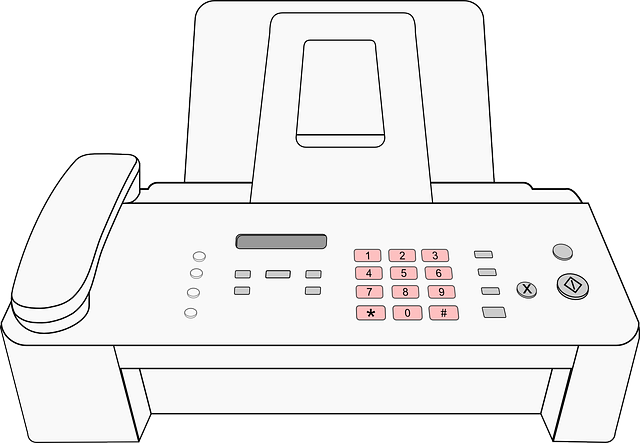Werden Telefone in 30 Jahren verschwinden? Ein Vergleich mit dem Faxgerät

Im digitalen Zeitalter, in dem sich Technologien schnell weiterentwickeln, ist es nur natürlich, die Langlebigkeit traditioneller Kommunikationsmittel in Frage zu stellen. Das Faxgerät, einst ein unverzichtbarer Bestandteil der Geschäftskommunikation, ist weitgehend verschwunden und wurde durch E-Mail und internetbasierte Dateifreigabe ersetzt. Dies wirft eine entscheidende Frage auf: Wird das Telefon denselben Weg gehen und in den nächsten 30 Jahren verschwinden? Mit dem Aufstieg digitaler ID-Systeme, der Integration von SMS und internetbasierten Kommunikationsplattformen untersuchen wir die Zukunft der Telefone und vergleichen ihren Verlauf mit dem Schicksal des Faxgeräts.
1. Der historische Kontext von Faxgeräten und Telefonen
1.1 Der Aufstieg und Fall des Faxgeräts
-
Rolle in der Kommunikation: Faxgeräte revolutionierten die Geschäftskommunikation, indem sie die sofortige Übertragung von Dokumenten über Telefonleitungen ermöglichten. Jahrzehntelang waren sie ein fester Bestandteil in Büros weltweit.
-
Ersetzung durch Internet-Technologie: Mit dem Aufkommen von E-Mail, Cloud-Speicher und Dateiübertragungsplattformen wurden Faxgeräte obsolet. Die Möglichkeit, Dokumente effizienter und kostengünstiger zu senden und zu empfangen, führte zu diesem Wandel.
-
Schlüsselfaktoren im Rückgang:
-
Hohe Wartungskosten.
-
Inkompatibilität mit moderner Internetinfrastruktur.
-
Eingeschränkte Funktionalität im Vergleich zu neueren Technologien.
-
1.2 Die Langlebigkeit des Telefons
-
Kernfunktionalität: Im Gegensatz zu Faxgeräten bieten Telefone eine Echtzeit-Sprachkommunikation, die in vielen Szenarien unersetzlich bleibt.
-
Anpassungsfähigkeit: Telefone haben sich erheblich weiterentwickelt, von Festnetztelefonen über Mobiltelefone bis hin zu internetbasierten Voice-over-IP (VoIP)-Systemen.
-
Weite Verbreitung: Telefone bleiben ein primäres Kommunikationsmittel für Einzelpersonen und Unternehmen und überschreiten geografische und generationale Grenzen.
2. Unterschiede zwischen Telefonen und Faxgeräten
| Merkmal | Faxgeräte | Telefone |
|---|---|---|
| Primärer Anwendungsfall | Dokumentübertragung | Echtzeit-Sprachkommunikation |
| Entwicklung | Durch E-Mail und Cloud-Speicher ersetzt | Auf VoIP- und mobile Plattformen umgestiegen |
| Emotionale Verbindung | Minimal | Hoch (Stimme vermittelt Ton und Emotion) |
| Abhängigkeit | Begrenzt auf bestimmte Branchen | Integral für das persönliche und berufliche Leben |
| Ersatzwerkzeuge | E-Mail, Cloud-Dienste | VoIP, Videoanrufe, Messaging-Apps |
3.Die Rolle der digitalen ID und SMS in der modernen Kommunikation
3.1 Integration mit digitalen ID-Systemen
-
Viele Länder, einschließlich der USA, führen digitale ID-Systeme ein, die Telefonnummern mit individuellen Identitäten verknüpfen.
-
Anwendungen:
-
Authentifizierung: Telefonnummern werden für die Zwei-Faktor-Authentifizierung (2FA) in Online-Diensten verwendet.
-
Verifizierung: Regierungs- und Finanzinstitutionen verlassen sich auf Telefonnummern zur Identitätsverifizierung.
-
3.2 Die anhaltende Bedeutung von SMS
-
Nützlichkeit in der Sicherheit: SMS bleibt entscheidend für den Versand von Einmalpasswörtern (OTPs) und Sicherheitswarnungen.
-
Unternehmenskommunikation: Unternehmen nutzen SMS für Marketing, Kundenservice und transaktionale Benachrichtigungen.
-
Einfachheit und Reichweite: Im Gegensatz zu internetbasierten Diensten funktioniert SMS ohne die Notwendigkeit von Smartphones oder Internetzugang, was es universell zugänglich macht.
4. Argumente dafür, dass Telefone relevant bleiben
4.1 Echtzeitkommunikation
-
Unmittelbare Antworten: Sprachgespräche ermöglichen sofortige Problemlösungen und Entscheidungsfindungen.
-
Kritische Szenarien: In Notfällen (z. B. im Gesundheitswesen oder Katastrophenmanagement) ist Echtzeitkommunikation unersetzlich.
4.2 Emotionale Verbindung
-
Menschliches Element: Im Gegensatz zu Textnachrichten oder E-Mails vermitteln Sprachgespräche Emotionen und Ton, was zu einem besseren Verständnis führt.
-
Kundenservice: Personalisierte Interaktionen durch Sprachgespräche führen oft zu höherer Kundenzufriedenheit.
4.3 Überbrückung der digitalen Kluft
-
Nicht jeder hat Zugang zu Smartphones oder zuverlässigem Internet.
-
Telefone dienen als essentielles Kommunikationsmittel für:
-
Ältere Bevölkerungsgruppen.
-
Landwirtschaftliche oder unterversorgte Gemeinschaften.
-
5. Argumente für den Ersatz von Telefonen
5.1 Der Aufstieg der internetbasierten Kommunikation
-
Plattformen wie WhatsApp, Zoom und Microsoft Teams bieten Sprach- und Videoanrufe zu niedrigeren Kosten.
-
Die Integration von Chat, Dateifreigabe und Videoanrufen in einer Plattform macht traditionelle Telefone weniger essenziell.
5.2 Automatisierung und KI
-
Sprachbots: KI-gesteuerte Telefonbots automatisieren den Kundenservice und reduzieren den Bedarf an menschlichen Mitarbeitern.
-
Textbasierte Lösungen: Chatbots und Messaging-Apps lösen Probleme oft schneller als traditionelle Anrufe.
5.3 Generationswechsel
-
Jüngere Generationen bevorzugen Textnachrichten und soziale Medien gegenüber Sprachanrufen.
-
Unternehmen setzen zunehmend Messaging-Apps für die interne und externe Kommunikation ein.
6.Die Zukunft der Telefone: Hybride Modelle
6.1 Omnichannel-Kommunikation
-
Die Zukunft liegt in der Integration von Sprache, Video und Messaging in einheitliche Kommunikationsplattformen.
-
Beispiele: Google Meet, Slack und Microsoft Teams.
6.2 IoT-Integration
-
Telefone könnten eine entscheidende Rolle bei der Verwaltung von Internet of Things (IoT)-Geräten spielen.
-
Anwendungen umfassen:
-
Smart-Home-Systeme.
-
Vernetzte Fahrzeuge.
-
Industrielle Automatisierung.
-
6.3 Verbesserte Sicherheitsfunktionen
-
Die Verknüpfung von Telefonen mit digitalen IDs gewährleistet eine sichere Kommunikation und reduziert Betrug.
-
Innovationen in der Verschlüsselung und Authentifizierung werden das Vertrauen in die Sprachkommunikation stärken.
7. Lehren aus dem Rückgang des Faxgeräts
7.1 Eingeschränkter Anwendungsfall
-
Faxgeräte hatten einen einzigen Zweck, was sie einfacher ersetzbar macht durch vielseitigere Werkzeuge.
-
Telefone hingegen bieten eine Vielzahl von Funktionen, die sich an veränderte Bedürfnisse anpassen.
7.2 Technologischer Stillstand
-
Das Faxgerät hat es versäumt, sich weiterzuentwickeln, während Telefone sich kontinuierlich mit den Fortschritten in der Technologie weiterentwickelt haben.
7.3 Marktsättigung
-
Die Nachfrage nach Faxgeräten nahm ab, als neuere Technologien zugänglicher wurden.
-
Telefone haben aufgrund ihrer Vielseitigkeit und Integration mit modernen Werkzeugen eine weit verbreitete Akzeptanz.
8. Fazit
Das Schicksal der Telefone unterscheidet sich erheblich von dem der Faxgeräte. Während Faxgeräte leicht durch E-Mail und Cloud-Dienste ersetzt wurden, entwickeln sich Telefone weiterhin und passen sich den modernen Anforderungen an.Von der Echtzeitkommunikation bis hin zu ihrer Integration mit digitalen IDs und IoT-Geräten bleiben Telefone ein wichtiges Werkzeug sowohl im persönlichen als auch im beruflichen Kontext.
Die Rolle traditioneller Telefone wird jedoch wahrscheinlich abnehmen, da internetbasierte Plattformen und KI-gesteuerte Technologien an Bedeutung gewinnen. Die Zukunft der Kommunikation wird sich möglicherweise nicht um traditionelle Telefone drehen, sondern um hybride Systeme, die Sprache, Video und Messaging in nahtlosen, einheitlichen Plattformen kombinieren. Im Gegensatz zu Faxgeräten haben Telefone eine anhaltende Relevanz gezeigt, die darauf hindeutet, dass sie, wenn auch in veränderter Form, noch jahrzehntelang bestehen bleiben werden.


